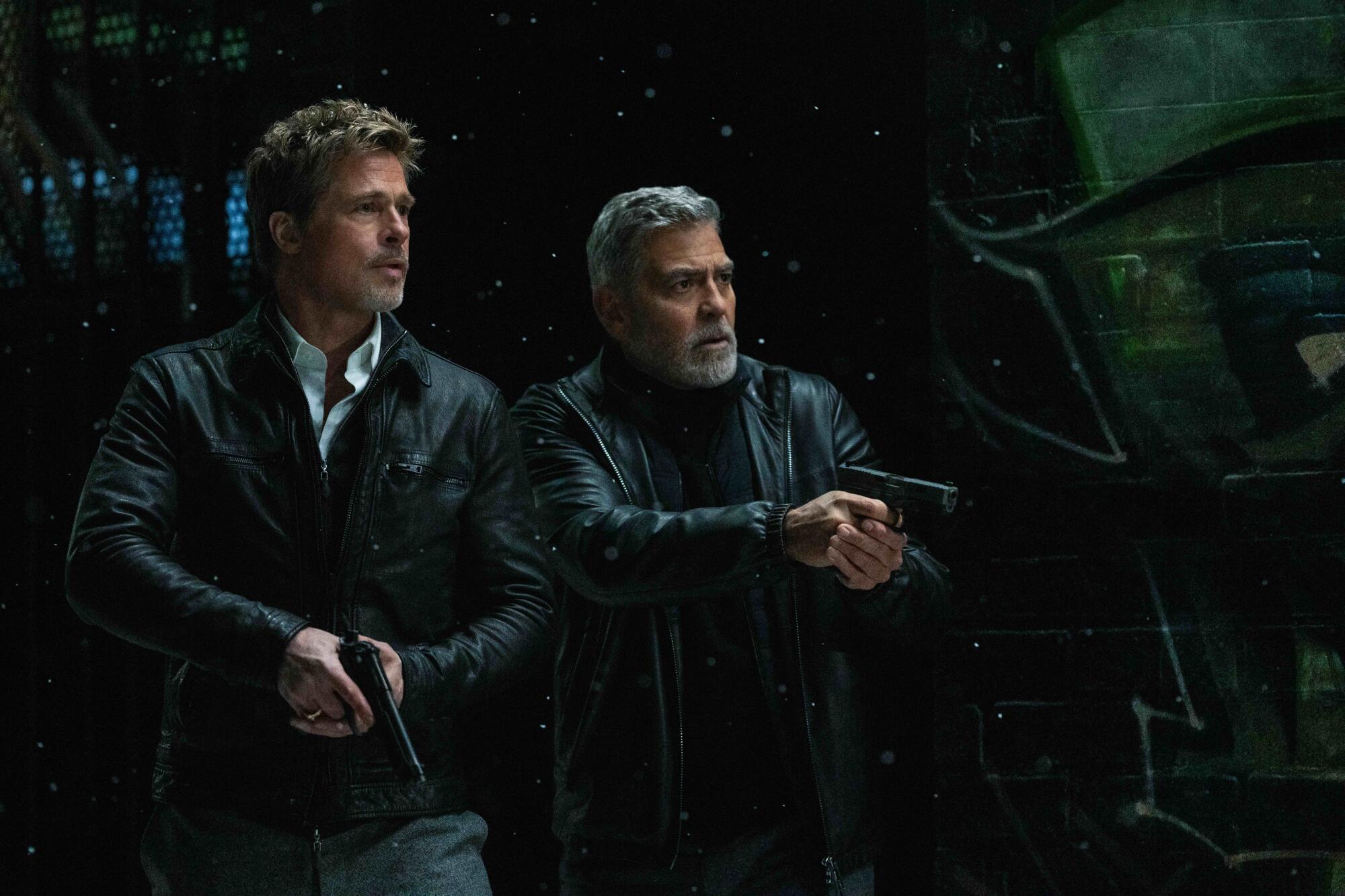Hollywood loves directors who start small and go big. After Christopher Nolan made his first American film, “Memento,” for $9 million, he popularized the now-familiar path from art house to studio lot by helming the $2.5-billion-grossing “Dark Knight” trilogy, followed by last year’s big-budget best picture winner, “Oppenheimer.” Three years ago, Chloé Zhao won an Oscar for directing “Nomadland” before taking a big swing with Marvel Studios’ ensemble adventure “Eternals,” which grossed $402 million worldwide. Damien Chazelle shot his Oscar-nominated jazz-themed “Whiplash” in 2014 for $3.3 million and two years later won the directing trophy for “La La Land,” also jazz-themed ($509 million on a $30-million budget). And before she masterminded 2023’s top-grossing movie “Barbie” ($1.4 billion), Greta Gerwig shot 2017’s “Lady Bird” for $10 million, picking up writing and directing Oscar nominations along the way.
Studios continue to bet that auteurs who make low-budget, high-quality work can figure out how to harness hundreds of VFX artists, designers and stunt people to epic effect. Here’s a look at three indie-rooted filmmakers who scaled up their storytelling talents this year on behalf of spectacle-level entertainments.

Lee Isaac Chung: from “Minari” to “Twisters”
Small: Chung made his autobiographically inspired family drama “Minari” for $2 million in 2020, and it earned six Oscar nominations, including best picture, winning the supporting actress trophy for Yuh-Jung Youn‘s performance, ultimately grossing more than $15 million worldwide.
Big: Chung directed Universal Pictures’ “Twisters,” which had a considerably heftier budget of $155 million. The Daisy Edgar-Jones/Glen Powell tornado disaster movie has grossed $371 million since its summer release.
Making it personal: As a kid, Chung survived a tornado shortly after his family moved to their new home in Arkansas. “This was something my father never considered as a possibility when he moved us into a trailer on this plot of land where he wanted to build his farm,” Chung said. “It didn’t have a storm shelter, so we all loaded up into my dad’s Dodge pickup and drove until we reached an area where we thought we’d be safe.”
Influences: In 1996, Chung saw the original “Twister” in a theater. “I distinctly remember the opening sequence, in which this family is running away from a tornado at night, and I turned to my family and said: ‘Hey! That’s us!’ I feel fortunate that I’m able to follow ‘Minari’ with a movie that feels personal to me despite being very different and much bigger.”

Barry Jenkins: from “Moonlight” to “Mufasa: The Lion King”
Small: Jenkins’ 2016 best picture-winning “Moonlight,” based on a semiautobiographical play by Tarell Alvin McCraney, cost $1.5 million and grossed $65 million in worldwide box office.
Big: Disney’s animated prequel about Mufasa’s early days as a youthful cub began production in September 2021 with an undisclosed budget but likely costing about $200 million range based on previous features. In expanding the “Lion King” empire, Jenkins follows another onetime indie talent, Jon Favreau (1996 comedy “Swingers”), who steered the 2019 live-action version of “The Lion King” to more than $1.6 billion at the global box office.
Teamwork: For “Mufasa,” Jenkins enlisted his close-knit team of “Moonlight” collaborators, including cinematographer James Laxton, editor Joi McMillon and composer Nicholas Britell.
Making it personal: Jenkins regularly watched “The Lion King,” which he estimates he’s viewed more than 150 times — while babysitting his younger nephews. “It was probably the thing I had seen the most before I went to film school,” he recently told The Times. “When I was offered the script, reading it allowed me the chance to tap into that — who I was as a fan of movies.”

Jon Watts: from “Cop Car” to “Wolfs” (by way of Spider-Man)
Small: Watts filmed his 2015 Sundance breakthrough, “Cop Car,” near his boyhood home in Colorado for a grand total of $800,000, coaxing maximum humor and suspense from Kevin Bacon as a criminal chasing two mischievous boys who’ve stolen an abandoned cop car.
Big: Leaping from microbudgeted thriller to mass-audience intellectual property in a single bound, Watts directed the Spider-Man trilogy starring Tom Holland as the web slinger for Marvel Studios. The final installment in 2021, “Spider-Man: No Way Home,” grossed more than $1.9 billion on a reported budget of $200 million.
Big stars: Watts wrote and directed “Wolfs” with George Clooney and Brad Pitt cast as rival “fixers” swapping wisecracks while trying to clean up a bloody accident. Filmed over roughly 70 days in New York City for an undisclosed sum, “Wolfs” premiered at the Venice Film Festival and played a limited theatrical run before streaming this fall on Apple TV+.
Influences: Jean-Pierre Melville’s 1967 French crime thriller “Le Samouraï” and the Robert De Niro-Charles Grodin two-hander “Midnight Run” served as inspirations for “Wolfs,” says Watts, who also referenced 2007 fixer drama “Michael Clayton” in his pitch to Clooney: “What if Michael Clayton met Michael Clayton?”
Making it personal: “‘Spider-Man’ was an incredible experience, and I totally take creative ownership over all of those films, but ultimately, ‘Spider-Man’ is always going to be Stan Lee and Steve Ditko’s creation,” Watts said, referring to the comic book’s co-creators. “For me, ‘Wolfs’ was about getting back to the weird space that is my space.”